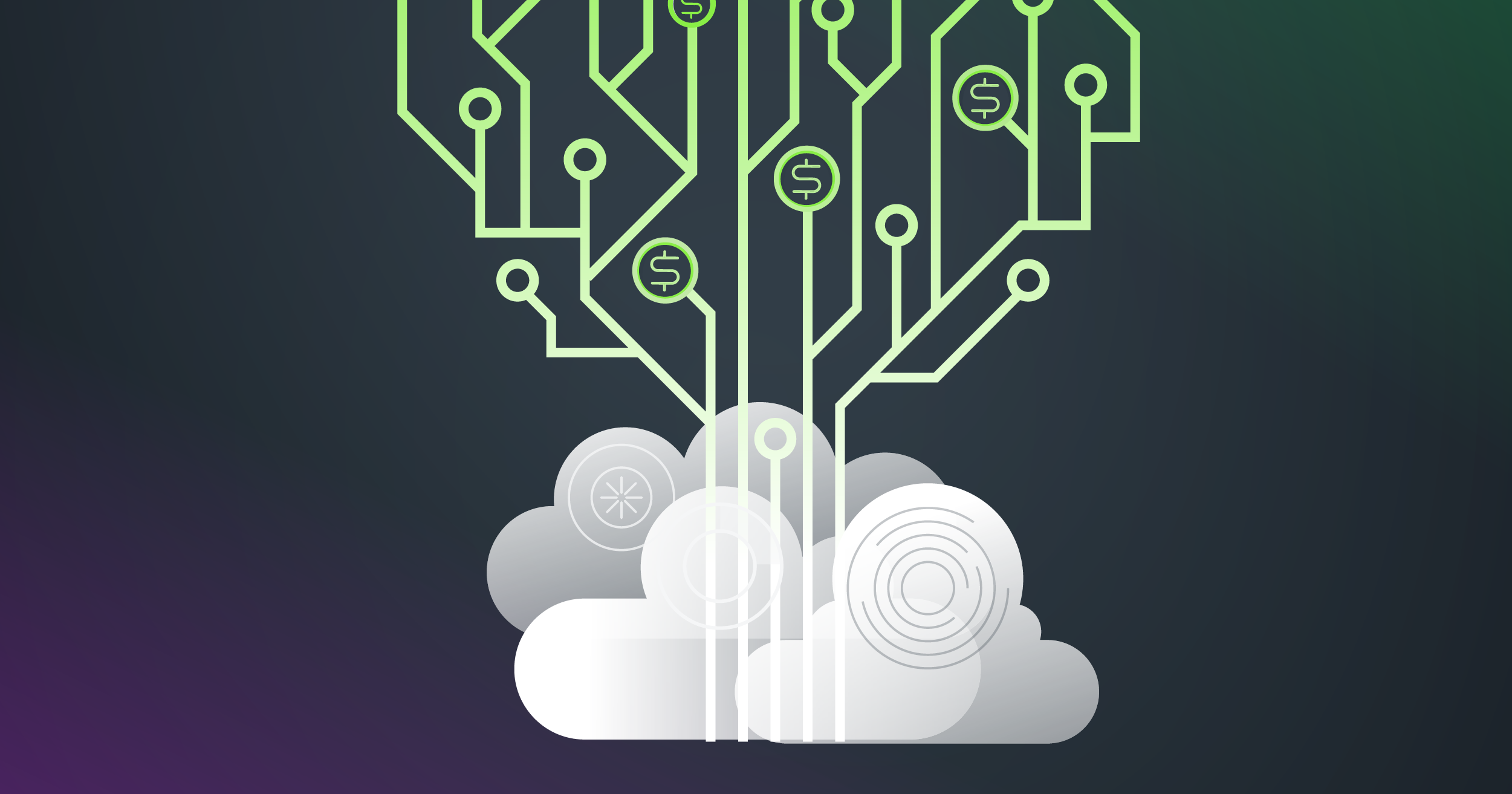Webinar
Implementing Innovative Pricing Models and Achieving Profitability in the Face of Rising Cloud and AI Costs
Discover how token-based pricing and AI-driven models can boost software revenue, reduce churn, and optimize monetization strategies for long-term growth.
Original Air Date: July 25, 2025
Overview
If you're a software producer looking to future-proof your monetization strategy, this webinar is a must-watch. Join Philip Daus, Partner at Simon Kucher, as he dives deep into the evolving landscape of software pricing models—from traditional subscription and consumption-based approaches to cutting-edge token-based and outcome-driven frameworks. With over 1,000 monetization projects annually and experience working with 75+ unicorns, Philip brings unmatched expertise and real-world examples that will challenge how you think about pricing.
You'll learn how AI is reshaping value capture, why seat-based pricing is losing relevance, and how innovative models like credit-based pricing can unlock new revenue streams. Discover how companies like Salesforce, ZenDesk, and Chargeflow are redefining pricing metrics to align with customer outcomes. Whether you're trying to reduce churn, drive upsell, or optimize for profitability, this session offers actionable insights to help you choose the right model for your business goals. Plus, get tips on packaging strategy, forecasting usage, and navigating revenue recognition challenges. Don’t miss this opportunity to rethink your pricing strategy and stay ahead of the curve
Recap
Key Themes and Takeaways
The Shift Toward Modern Monetization Models
The session began with a look at how software pricing has evolved—from on-premise and subscription models to hybrid and consumption-based approaches. The rise of AI and cloud technologies is accelerating the need for more dynamic, value-aligned pricing strategies.
Pricing Metrics Over Price Points
A central theme was the importance of pricing metrics. The webinar emphasized that what companies charge for (e.g., per conversation, per document, per outcome) often has more impact than how much they charge. Examples from companies like Salesforce and Chargeflow illustrated how creative metrics can better align with customer value and drive revenue growth.
Token-Based Pricing Explained
Token-based pricing was introduced as a flexible model that allows customers to pre-purchase credits and use them across various services. This structure simplifies complex pricing schemes and enables software providers to bundle diverse offerings under a unified system, similar to arcade-style credit systems.
Packaging Strategies That Drive Growth
The webinar explored how packaging influences monetization. It compared “all-you-can-eat” bundles with “build-your-own” models and showed how segment-specific packaging can create clear upsell paths and improve customer acquisition and retention.
Aligning Monetization with Business Objectives
Choosing the right pricing model depends on strategic goals—whether acquiring new customers, monetizing existing ones, or improving retention. Each objective requires different levels of pricing complexity, packaging, and customer incentives, making alignment critical for success.
Managing Wastage and Overages
Token-based models introduce risks like unused credits (wastage) and over-consumption (overages). The webinar covered strategies such as full or partial rollover, true-ups, and transparent usage tracking to mitigate these risks while maintaining customer satisfaction.
Operational and Financial Considerations
Implementing new pricing models requires operational changes, including forecasting usage, tracking consumption, and handling revenue recognition. The session highlighted the importance of aligning internal systems and sales incentives to support these models effectively.
AI’s Disruption of Traditional Pricing
AI is changing how software value is delivered, making seat-based pricing increasingly obsolete. The webinar stressed the need to adopt models that reflect AI’s impact on productivity and usage, such as outcome-based or token-based pricing.
Speakers

Philip Daus
Partner
Simon Kucher

Michael Goff
Principal Product Marketer
Revenera
Frequently Asked Questions
Token-based pricing allows customers to pre-purchase credits (or tokens) that can be used across various software features or services. This model simplifies complex pricing structures by unifying multiple metrics under a single system. It enables flexible usage and can incentivize trial across a product portfolio. Software providers benefit from upfront revenue and the ability to manage overages and wastage strategically.
Seat-based pricing is losing relevance as AI reduces the need for human users in software workflows. As automation increases, the number of billable users declines, making seat-based models less scalable. Modern pricing strategies focus on usage, outcomes, or work completed to better reflect the value delivered. This shift helps software companies maintain revenue growth despite changing user dynamics.
A centralized system simplifies integration across CRM, billing, and fulfillment platforms. It reduces operational complexity, especially in hybrid environments with on-prem and SaaS products. It also enables consistent monetization models and provides a single source of truth for analytics and reporting.
Hybrid pricing models combine elements like subscription and usage-based pricing to offer flexibility and resilience. These models help companies balance predictable revenue with scalable monetization. They’re especially useful in environments where customer usage varies or where AI-driven features introduce new value metrics. Hybrid models also allow for smoother transitions between pricing strategies.
Managing wastage and overages in token-based pricing requires clear policies and transparency. Options include full or partial rollover of unused credits, true-up billing for overages, or offering additional usage packages. Providing usage dashboards and proactive communication helps customers understand their consumption and reduces frustration. These strategies also support long-term retention.
Packaging is critical to monetization because it defines how features are bundled and sold. Effective packaging aligns with customer needs and segment-specific value drivers. Moving away from “all-you-can-eat” or overly complex “build-your-own” models toward curated bundles can improve upsell opportunities and simplify the buying process. Packaging also influences pricing strategy and customer perception.
Accurate forecasting of token usage requires analyzing historical usage data, understanding customer behavior, and segmenting users by needs. Companies should also model different scenarios to anticipate overages or underutilization. This helps optimize pricing tiers and ensures customers are matched with the right packages. Forecasting is essential for revenue recognition and operational planning.
Token-based pricing introduces complexity in sales, forecasting, and customer education. Risks include customer confusion, unpredictable usage patterns, and operational challenges in tracking and billing. Companies must invest in clear communication, usage dashboards, and internal alignment across sales, finance, and customer success teams. When done right, token models can unlock significant revenue potential.
AI changes how value is created and consumed in software, making traditional pricing models less effective. As AI automates tasks and reduces manual effort, pricing must shift toward usage-based or outcome-based models. These approaches better reflect the value delivered and allow companies to monetize AI features more effectively. AI also introduces variable costs that influence pricing decisions.
Transitioning to a new pricing model requires a clear migration strategy, internal alignment, and customer communication. Companies should pilot new models with select segments, gather feedback, and adjust based on usage data. Sales incentives and compensation structures must be updated to reflect the new model. Success depends on cross-functional collaboration and a deep understanding of customer value drivers.
Resources
Webinar
AI Monetization Unlocked: Master Pricing Models and Plan for Market Success
Tuesday, January 27, 2026
Join IDC's Tiffany McCormick, Research Director, AI Monetization, Pricing Strategies, and Business Models and Revenera's Paul Bland, VP, Product Management to learn pragmatic ways to align price with value—and avoid the cost‑plus trap.
Webinar
Revenera Connect 2026: Boston
Wednesday, February 11
Webinar
6 Steps to Launching Usage-Based Pricing for SaaS and AI
Tuesday, February 17, 2026
In this webinar, Nicole Segerer, General Manager at Revenera, will share this practical 6-step framework for launching usage-based pricing in SaaS, AI, and even on-premises products.
Want to learn more?
See how Revenera's Software Monetization platform can help you take products to market fast, unlock the value of your IP and accelerate revenue growth.
